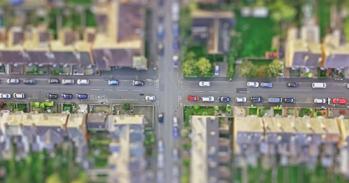
Dr Finbarr Livesey – University lecturer and Deputy Director of the MPhil in Public Policy – submitted research to Parliament’s recent report on digital democracy. Here, he discusses the report’s implications for the democratic process in the UK.
Dr Finbarr Livesey – University lecturer and Deputy Director of the MPhil in Public Policy – submitted research to Parliament’s recent report on digital democracy. Here, he discusses the report’s implications for the democratic process in the UK.
While 7% of the public feel engaged in decision making in Parliament, 53% want to be involved
Finbarr Livesey
The recent release of the report from the Speaker’s Commission on Digital Democracy attracted significant attention but really only for one of the 26 recommendations. The report contained much that was good, some that was pedestrian, but it has all been swept away because one recommendation was of a different stripe altogether – to have online secure voting as an option in the UK by 2020.
Before getting into the detail of the report we should get one thing out of the way. This is a report that was long overdue, whether it came from the Speaker, a Select Committee or another part of the mangle that is government. With the speed that online has come to dominate our personal and professional interactions, it was a glaring omission that the UK government and the Parliament in particular had not addressed the digital world, their role in it and how it can be used to improve democratic outcomes. Granted the Government Digital Service (GDS) is working hard to improve how government services are accessed, although it is best to not get into an argument about whether gov.uk is an improvement or not (as Chris Cook did with his Christmas wish for 2014). However, anything that starts a stronger debate on how the machinery of government interacts with the public and policymaking is a good thing.
Let’s get the obvious out of the way first. Many of the recommendations are not specifically about digital, they are about democracy. “By 2020, the House of Commons should ensure that everyone can understand what it does.” You would have hoped that this would at least have been as aspiration for some time now. Reducing the amount of jargon, making procedures clearer, having a communications strategy – it is frustrating that we are still at such an early point in the evolution of the House and its relationship to the outside world that these actions are pending.
Efforts to improve public participation in policy making depends on people wishing to be involved, as well as assuming we have a shared model of how representation works. On the first point, our recent survey highlighted an expressed desire to be involved, which we included as part of our submission to the Commission. According to the poll while 7% of the public feel engaged in decision making in Parliament, 53% want to be involved. Now that number may be soft, as it is easy to say you want to be involved but actually being involved is another thing. Assuming half of those who express the desire to be involved would actually get involved, that’s a 19 point difference between the current state of affairs and what people want. If new digital tools, clearer websites and better outreach help in that regard, fantastic.
The concern here is raising expectations that cannot be met. This is the case with recommendation 18 to have a ‘cyber chamber’ for public debate on issues being discussed in Parliament. The desire to be involved has been translated by some as ‘getting my way’. To caricature, when I tell my MP what should be done I expect that to happen. If we promote engagement such as that involved in a ‘cyber chamber’ without clarifying the process of discussion, negotiation and compromise that happens in almost all policy areas, then we’ll be raising expectations that will be dashed, potentially worsening the situation further.
This leads to the second point on representation – how do we think representation works in the UK at the national level? Crudely the options have been characterised as having delegates (MPs who take our views on board as issues arise), trustees (MPs who can use their judgement on an issue), or party (where the party line is all). Is the approach in the report to tilt towards a delegate model of representation? It’s unclear reading the report. Without discussing how the link between the public and their representatives is construed, the report missed an opportunity to have a more fundamental conversation about the structure of the UK’s democratic system.
And then there is recommendation 26. Once the Commission’s report was released the news picked up on this to the exclusion of pretty much everything else in the report. From the BBC to the newspapers, the response was to acknowledge some of the good things in the report, but to be critical of the need for online voting. Is online voting necessary? Will having online voting improve turnout or improve the connectivity between the public and MPs? The answer to both questions is that we don’t know. The Commission says it is “… confident that there is a substantial appetite for online voting in the UK …” but does not present any evidence to back this statement up. The claim is that voting will become more accessible, but there is no evidence that even if it is more accessible that it will increase the rates of voting, or the subsequent engagement or satisfaction of the public with politics.
Overall the Commission should be regarded as successful in getting a conversation going on the modernisation of Parliament and its procedures. Letting in the sunlight should help increase trust and hopefully improve the speed and quality of policy making. However, this does seem to be an opportunity missed to have a deeper conversation on the nature of representation in the UK, and in a report with too many recommendations a mistake to allow one recommendation to overshadow all of the others.
Finbarr Livesey provided a submission to the Digital Democracy Commission on public engagement with policy making which can be accessed here.
This post was originally published on the blog site for the Cambridge Masters in Public Policy. Read more here.
The text in this work is licensed under a Creative Commons Licence. If you use this content on your site please link back to this page. For image rights, please see the credits associated with each individual image.





